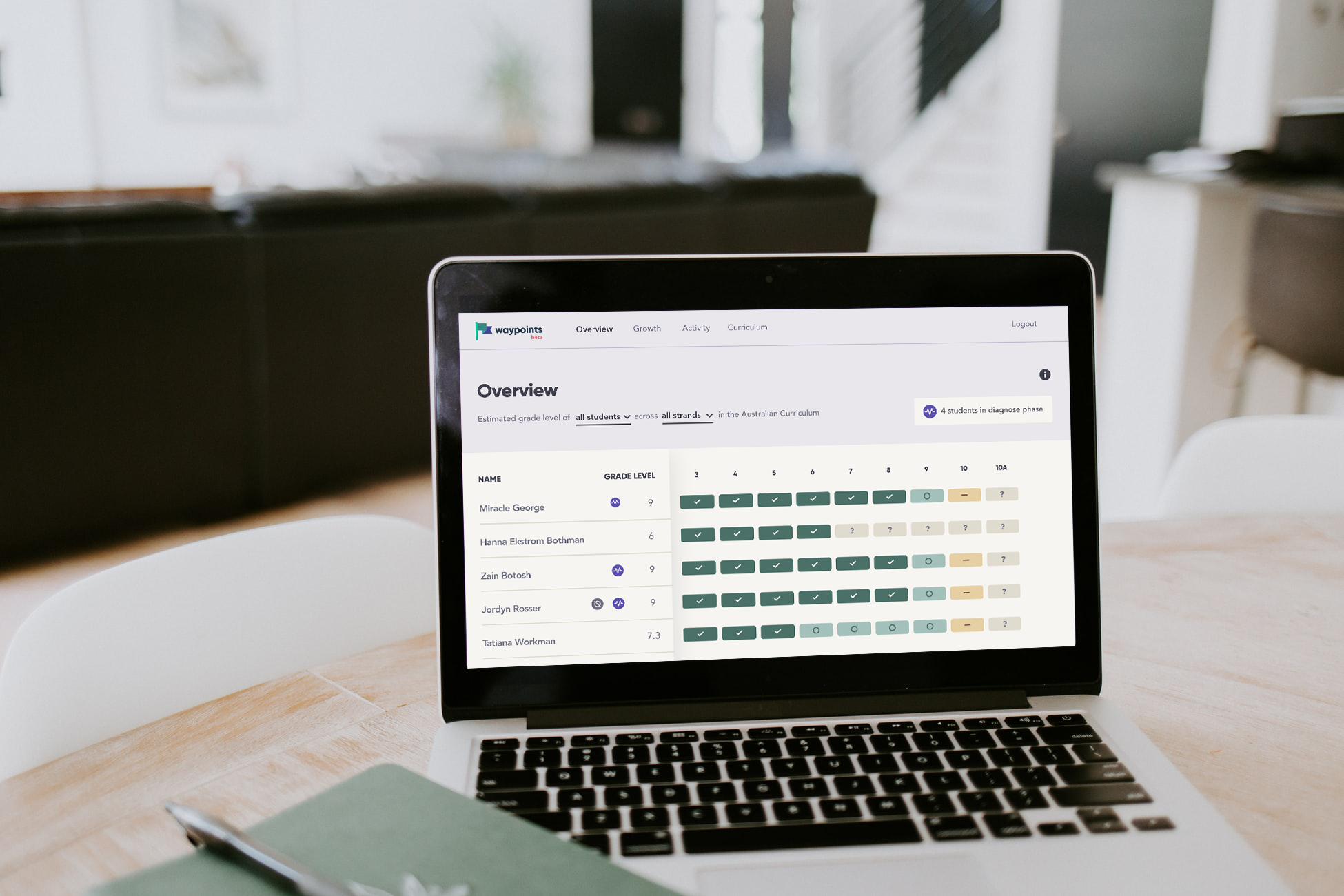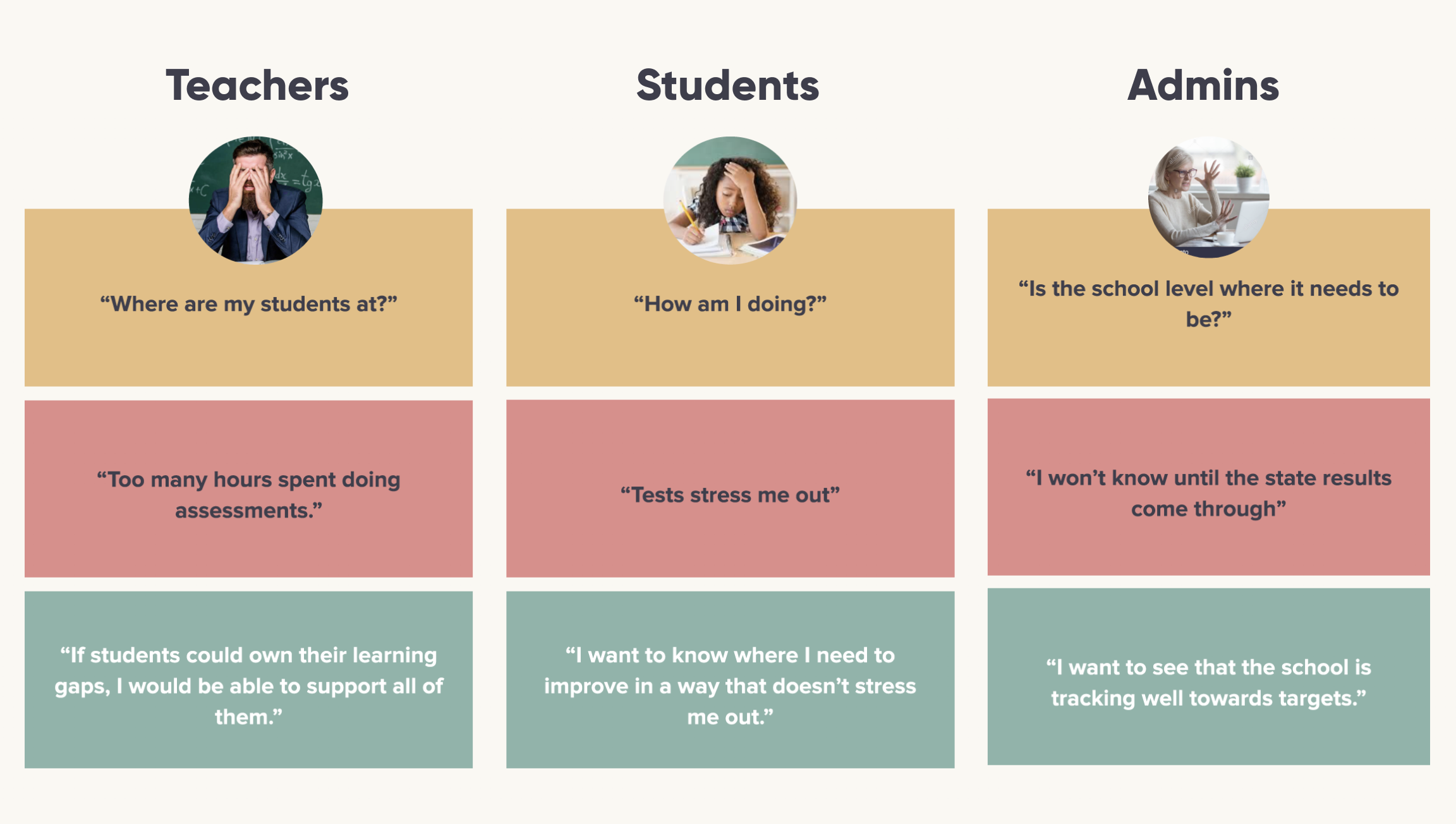Continuous Assessment - what Mathspace is doing to help
We decided to build a product that addresses the function of assessment in a way that was beneficial to all parties involved - introducing Waypoints, an online continuous assessment tool that utilizes smart AI-powered diagnostics to track student gaps and growth.

Read part one of the "Continuous Assessment" blog here.
We decided to build a product that tries to address the function of assessment in a way that was beneficial to all parties involved.
To first map out the problem sphere, our team at Mathspace conducted ongoing interviews with teachers, students, and school admins to understand the biggest frustrations they face when it came to assessment.
The problems and solution

For students, it was reiterated that tests really stress students out, so we needed to find a way to make assessments student-driven, reduce anxiety, and accurately measure what they know. For teachers, what we often heard was "assessments take up too much time." Teachers wanted to be able to know where students are at, without taking too much time out of class time. Lastly, for school admins, they also need to monitor student learning, as well as track how their school is progressing, without having their teachers lose too much class time.
Breaking this down, we looked at the main requirements our new assessment tool had to do:
- Measure what matters: align to student learning objectives
- Make the best use of class time
- Provide feedback that is meaningful
- Provide data for teachers and students, and
- Empower students to take ownership of their own learning and growth
The assessment tool also needed to be "unobtrusive" - it must be easy to implement and not cause further frustrations.
What we built was an online continuous assessment tool that utilizes smart AI-powered diagnostics to track student gaps and growth. We call those assessments "Skills Check Ins".

How does it work?
For Students:
- They can get started on their own by completing check-ins. These check-ins are short and can be built into a routine (like a warm up or exit ticket) encouraging students to perceive them as low-stakes, which in turn helps to reduce anxiety and stress.
- The check-ins are adaptive so they adjust to each individual student's level of ability.
- Rather than giving students a final grade, the check-ins reveal student progress by way of a skills report enabling them to identify where they are at and how to grow from there.
- Students can identify what they should work on mastering next, and can start a practice workout to do so, straight from a check in completion screen, from their skills report or from the dashboard. This encourages a growth mindset and provides a true assessment for learning model.
For Teachers:
- The time required for teachers is minimal. Teachers just need to encourage students to do their check-ins, then log in and view their data (in real-time).
- There is no need to take time to create, assign, or personalize the assessments - the check-ins are student-driven, and every time they log in, there's an assessment ready for them to do - tailored to their prior knowledge and, if teachers are assiging practice work, aligned to a relevant topic area too.
- Teachers can make use of our comprehensive reports to see mastery data by standard, see knowledge gaps across classes or for individuals, filter by proficiency for all students, or groups of students, filter by grade, or filter by strand/domain. Administrators can also track data over time at a cohort level.
Register now for a free Mathspace account, including access to our skills check ins.
